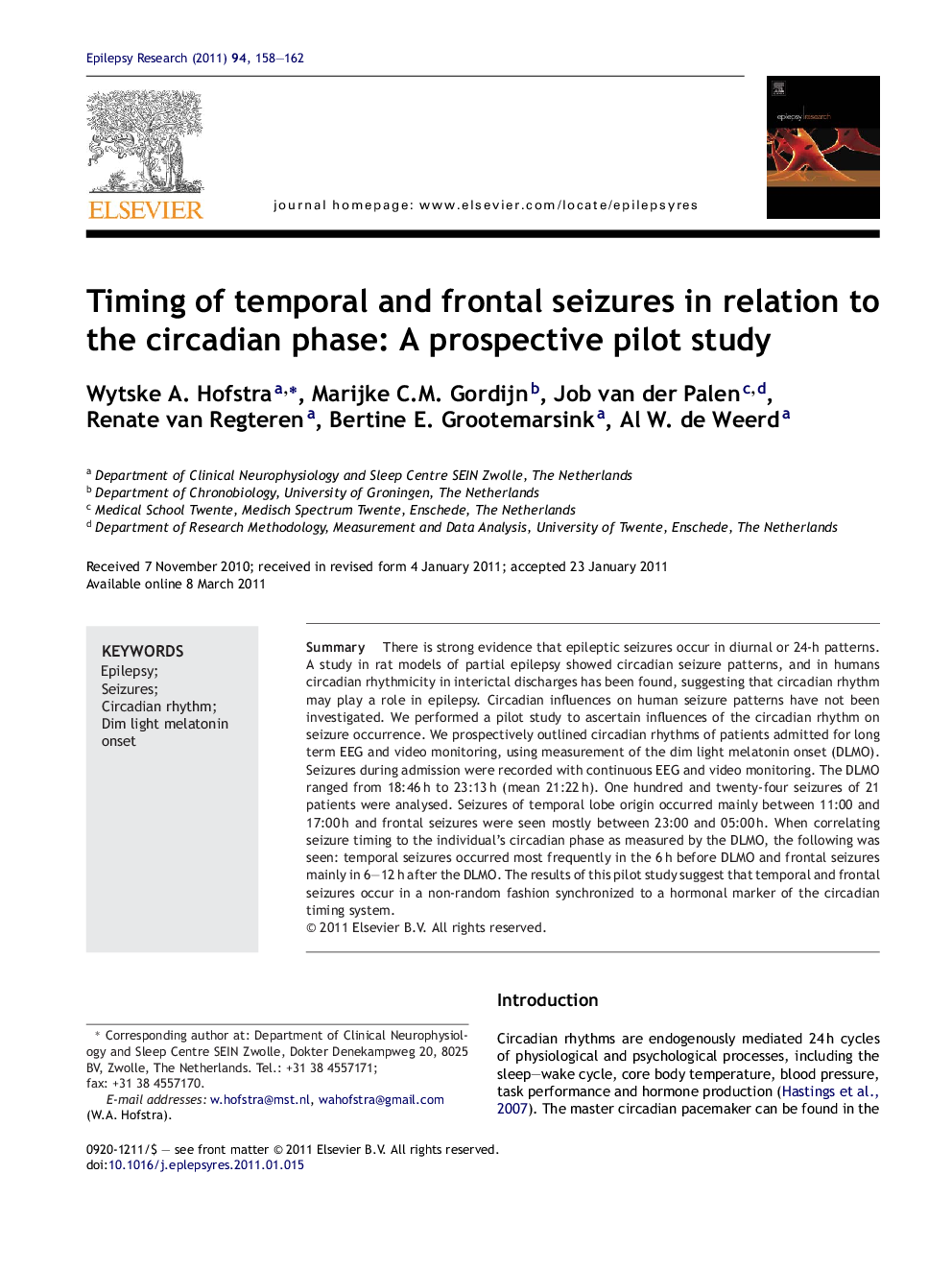| Article ID | Journal | Published Year | Pages | File Type |
|---|---|---|---|---|
| 3052462 | Epilepsy Research | 2011 | 5 Pages |
SummaryThere is strong evidence that epileptic seizures occur in diurnal or 24-h patterns. A study in rat models of partial epilepsy showed circadian seizure patterns, and in humans circadian rhythmicity in interictal discharges has been found, suggesting that circadian rhythm may play a role in epilepsy. Circadian influences on human seizure patterns have not been investigated. We performed a pilot study to ascertain influences of the circadian rhythm on seizure occurrence. We prospectively outlined circadian rhythms of patients admitted for long term EEG and video monitoring, using measurement of the dim light melatonin onset (DLMO). Seizures during admission were recorded with continuous EEG and video monitoring. The DLMO ranged from 18:46 h to 23:13 h (mean 21:22 h). One hundred and twenty-four seizures of 21 patients were analysed. Seizures of temporal lobe origin occurred mainly between 11:00 and 17:00 h and frontal seizures were seen mostly between 23:00 and 05:00 h. When correlating seizure timing to the individual's circadian phase as measured by the DLMO, the following was seen: temporal seizures occurred most frequently in the 6 h before DLMO and frontal seizures mainly in 6–12 h after the DLMO. The results of this pilot study suggest that temporal and frontal seizures occur in a non-random fashion synchronized to a hormonal marker of the circadian timing system.
